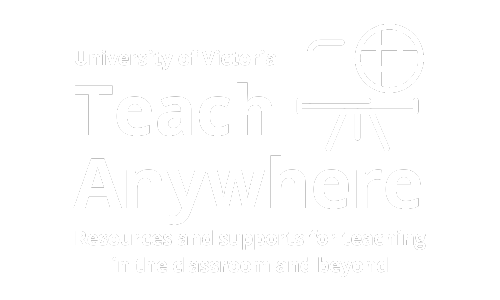About this resource
When you design sessions with accessibility in mind then more people will be able to participate and contribute meaningfully, and without experiencing barriers.
Find tips to consider for before, during and after your session, for modalities that may be in-person, online or a combination of in-person and online (hybrid). Browse resources and tools for creating accessible materials that support you along the way.
Before, during and after your event
Before Event
Share in advance
-
- Share accessibility message or checklist during registration and invite participants to share additional needs
- Share accessible materials (e.g., pre-reading, slides, audio, video) and resources with participants in advance
- Remind in-person participants to refrain from wearing strong fragrances
Choose a space and test technology
-
- Choose a space that is accessible, and review and test relevant features (e.g., technology, visibility, acoustics, access, mobility, amenities)
- Test room audio, and test viewing (or camera) angles as facilitator. Can in-person and online participants see and hear the facilitator?
Why share before?
- Lets participants prepare in advance, and may include translating or using adaptive technology.
- Lets participants ask questions or raise concerns ahead of time, which can enhance engagement and ensure event runs smoothly.
During Event
Record and enable captions and transcriptions
- Enable real-time automatic captioning in your presentation application and for all pre-recorded audiovisuals. Learn more about PowerPoint captions, Google Slide captions, Zoom captions, or MS Teams captions
- Record session whenever possible (e.g., Zoom or Echo). It is possible to record in-person events in many classrooms
- Save Zoom chat and Zoom transcript before ending the session (if applicable)
Read aloud and describe
- Read aloud text materials (e.g., screens, charts, boards, slides)
- Verbally describe visual materials (e.g., images, charts, handouts)
- Verbally repeat questions and comments posted in chat, and from in-person participants where no microphone is available
- Ask participants to identify themselves when speaking
Schedule self-care and movement breaks
- Schedule breaks during longer sessions
- Invite participants to engage in and move around the space as needed
Why read and describe?
- Helps participants understand information that is being shared so they can engage with content and discssion.
- Promotes inclusion for participants who may have difficulty reading text on slides or chat, or seeing visual information.
After Event
Share resources and updates
- Share new resources mentioned in the session
- Share an updated version of the slides (PowerPoint format), if any changes were made since initial version was sent out
Share recordings and transcipts
- Share the transcript whenever possible (remove private comments)
- Share recording of the session (Echo) and enable captions
Invite feedback
- Provide an opportunity for participants to share their feedback and / or requests for next steps in support of future sessions
Why share after?
- Recordings, transcripts, and updated materials are helpful resources for participants who want to refer back to information presented, to update notes, fill in knowledge gaps, or apply their learning to other contexts.
Accessible event materials
How to design accessible event materials
Consider how you typically ask participants to engage in your session – by reading, watching, listening, touching, speaking, or moving. The way session materials are designed impacts the clarity and comprehension of your content as well as how it functions on different devices.
For example, someone in a noisy environment who forgot their headphones benefits from closed captions; someone learning English as an additional language benefits from plain language and closed captions; and someone using assistive technology to access content benefits from structure and templates.
Colour and contrast
- Maintain high contrast between adjacent colours (e.g., text and background, graphics, charts)
- Present information communicated through colour in an alternative form
Graphics and images
- Provide a text alternative for images that convey information
- Verbally describe images used during the session
Handouts, flipcharts, whiteboards
- Create accessible digital alternatives (e.g., Word, PowerPoint, web pages)
- Print some copies of handouts that have enlarged font styles
Hyperlinks
- Create unique and descriptive links so readers know where the link is directing them.
- Use complete URLs when printing
How to:
Multimedia
- Enable live transcription / captions
- Edit and publish captions on event recordings
- Provide a brief description of a video, before playing it
Plain Language
- Use plain language and avoid jargons and acronyms
- Use active voice and a logical reading order
- Avoid using all caps
Structure and templates
- Use a prebuilt template
- Use consistent heading structure (H1, H2) to organize content into logical sections
Tables
- Use well-structured tables (no merged or split cells) to display data rather than using them solely for aesthetic purposes
Built-in Accessibility Checkers
How to use built-in accessibility checkers
Built-in accessibility checkers are tools for identifying common design elements (or missing elements) that impact accessibility. Most tools will identify issues and warnings as well as offer explanations how to address them.
Similar to the spelling checker in Word, built-in accessibility checkers can be a useful tool in your content review process; however, there are limitations, and you should always complete a manual review of your content as well.
Accessibility checkers
- Use built-in accessibility checkers to evaluate your content against a fixed set of rules (e.g., alt text, slide titles, tables)
- Manually evaluate issues not detected by checkers (e.g., headers, reading order, colour contrast)
